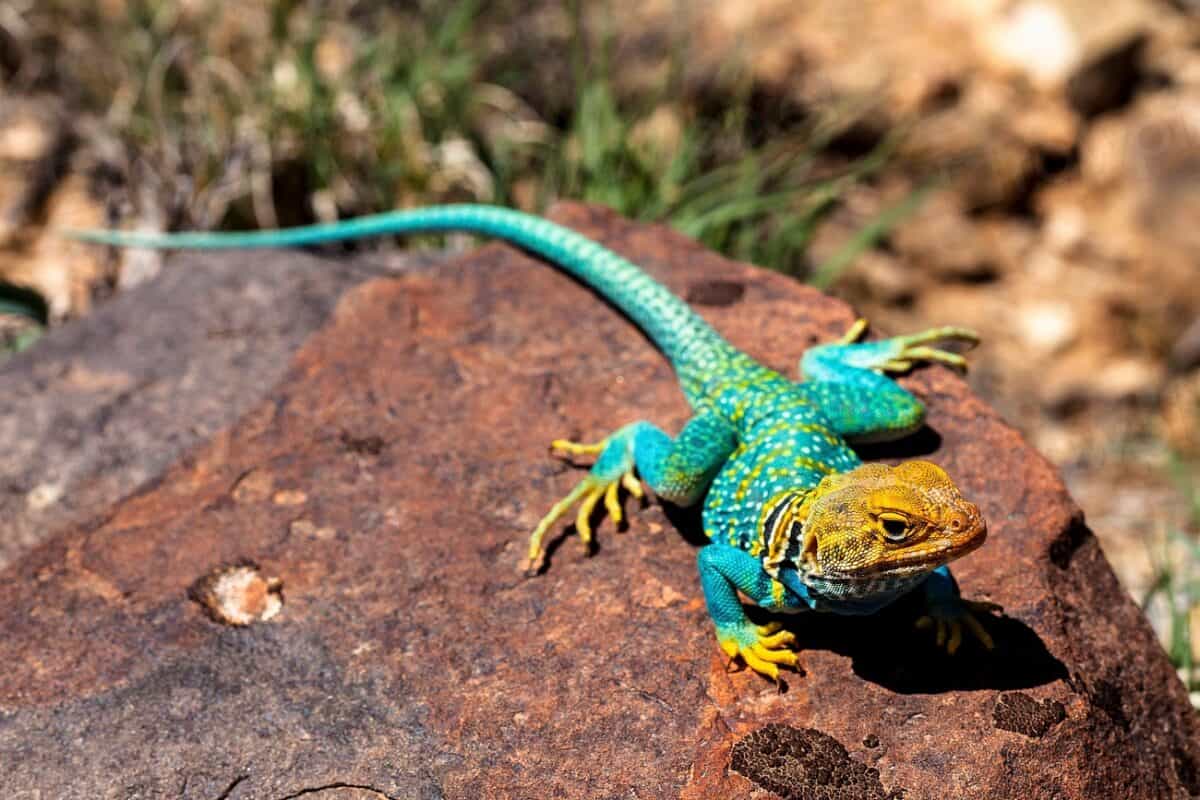Lizards are fascinating creatures that boast a wide range of sizes, shapes, and colors. Some lizards use their vibrant hues for camouflage, others for attracting mates or warding off predators. This engaging exploration introduces you to the ten most colorful lizards found across the globe, revealing the mesmerizing palette of colors these remarkable reptiles display. We’ll dive into their habitats, characteristics, and some intriguing facts that make them spectacular representatives of the reptilian world.
10. Panther Chameleon

The Panther Chameleon, native to the island of Madagascar, is celebrated for its dazzling array of colors. This species can change its hue with the help of special cells called chromatophores. Males are especially colorful, boasting shades that can include red, green, blue, orange, and yellow, while females tend to be more muted. Their color changes help in communication and temperature regulation, making them a favorite among reptile enthusiasts.
9. Blue Tree Monitor
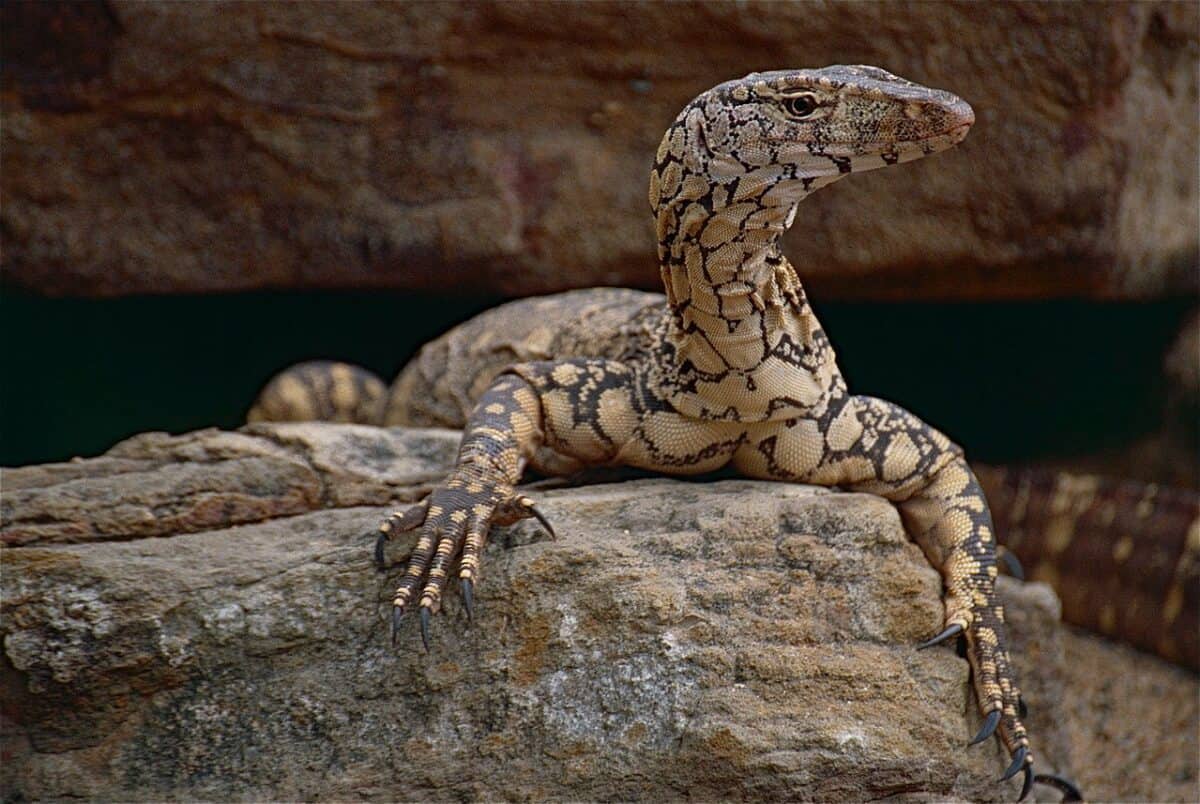
Found in the tropical forests of Indonesia, the Blue Tree Monitor sports a striking electric blue color. These reptiles are arboreal, showcasing their beautiful blue scales as they climb trees with agility. The unique coloration of this monitor lizard is due to high levels of guanine crystals in its skin, lending a metallic sheen that’s visually stunning.
8. Rainbow Agama
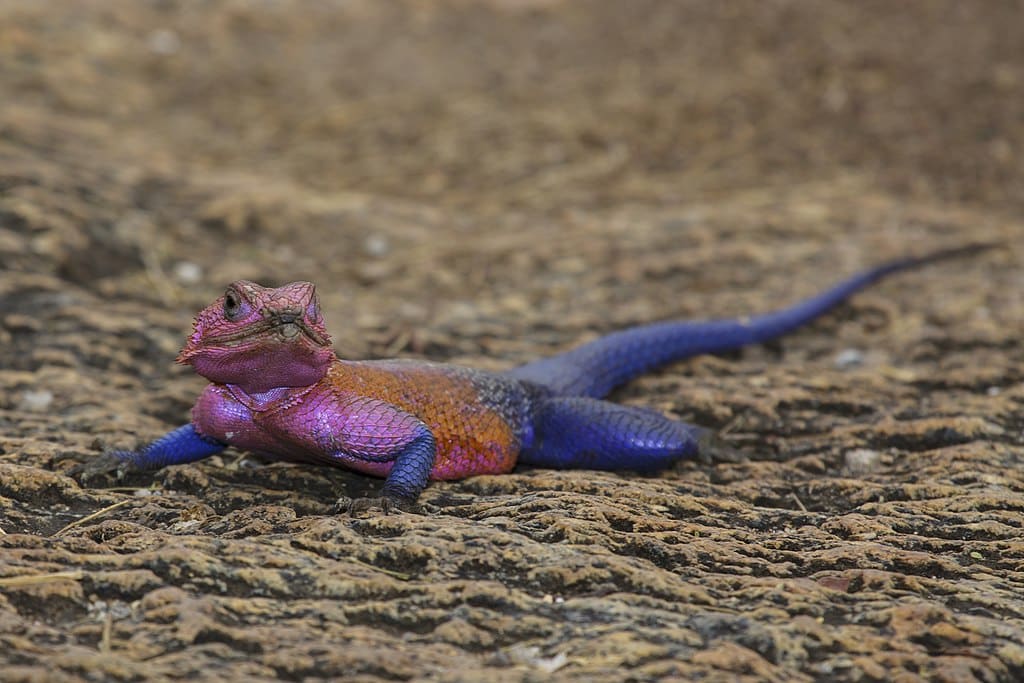
Rainbow Agamas are ground-dwelling lizards native to sub-Saharan Africa. Males are particularly eye-catching during the breeding season, as they turn shades of red, orange, and blue to entice female agamas. During non-breeding periods, their colors fade, demonstrating an amazing transformation that highlights their reproductive strategies.
7. Jeweled Lacerta
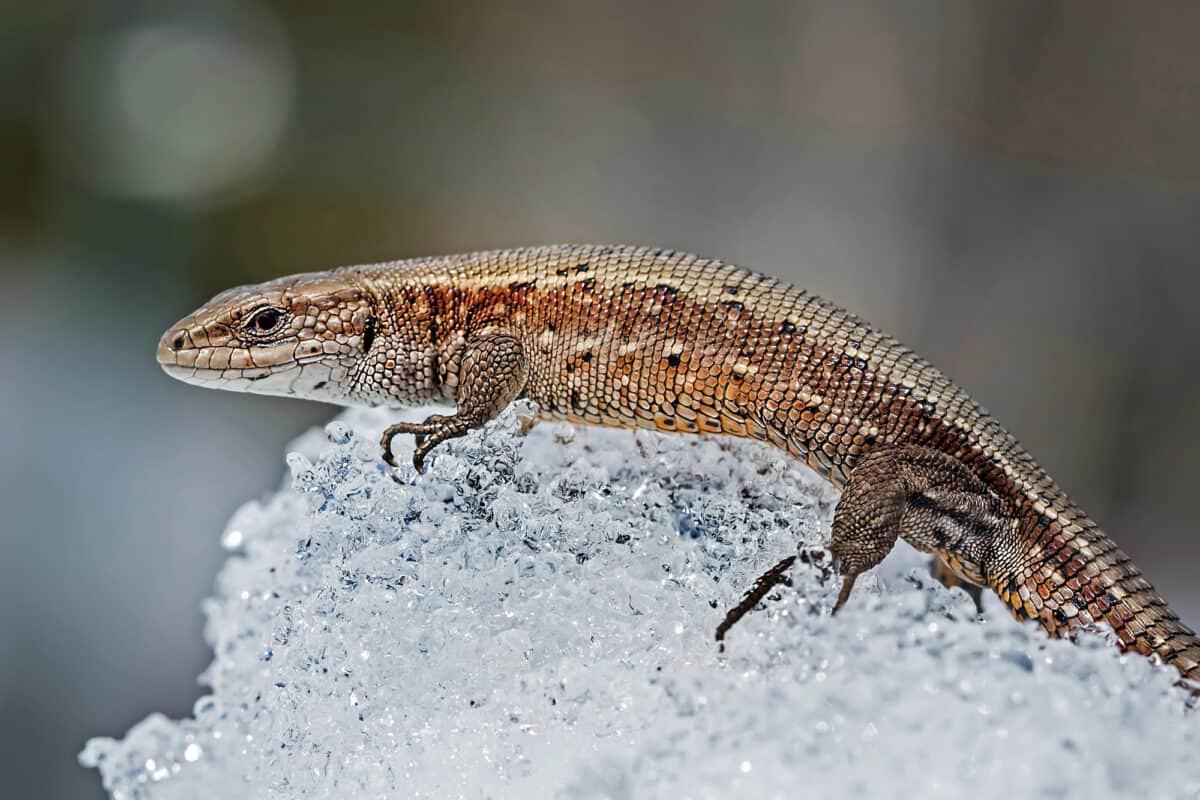
Jeweled Lacertas, or Ocellated Lizards, are named for their vibrant, jewel-like scales. Native to the Iberian Peninsula and parts of southwest France, these lizards exhibit green bodies accented with blue spots. Their majestic coloration not only serves as a visual treat but also blends well with the savanna habitats they call home.
6. Emerald Swift
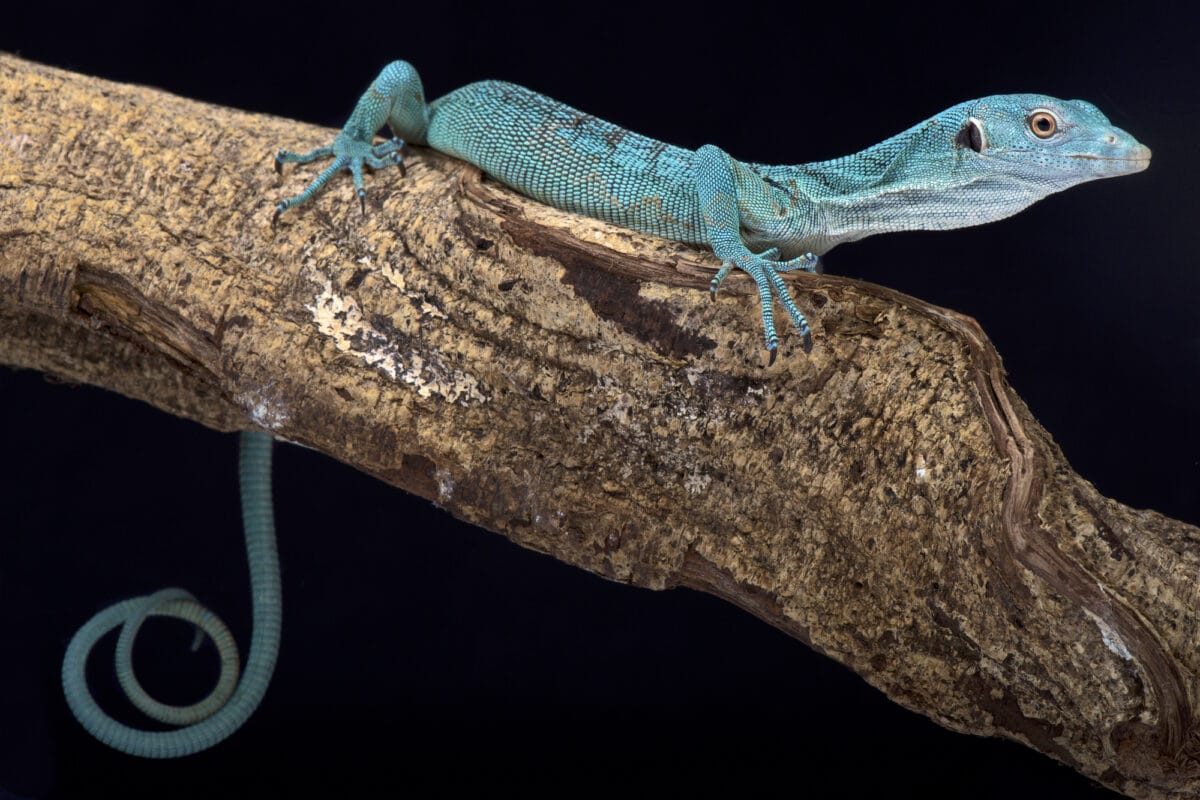
Emerald Swifts are small, striking lizards found in Central America. As their name suggests, they have a brilliant green coloration, sometimes with bluish tones, particularly in males. Known for their swift movements, these lizards match their dazzling appearance with an equally captivating speed and agility.
5. Green Basilisk
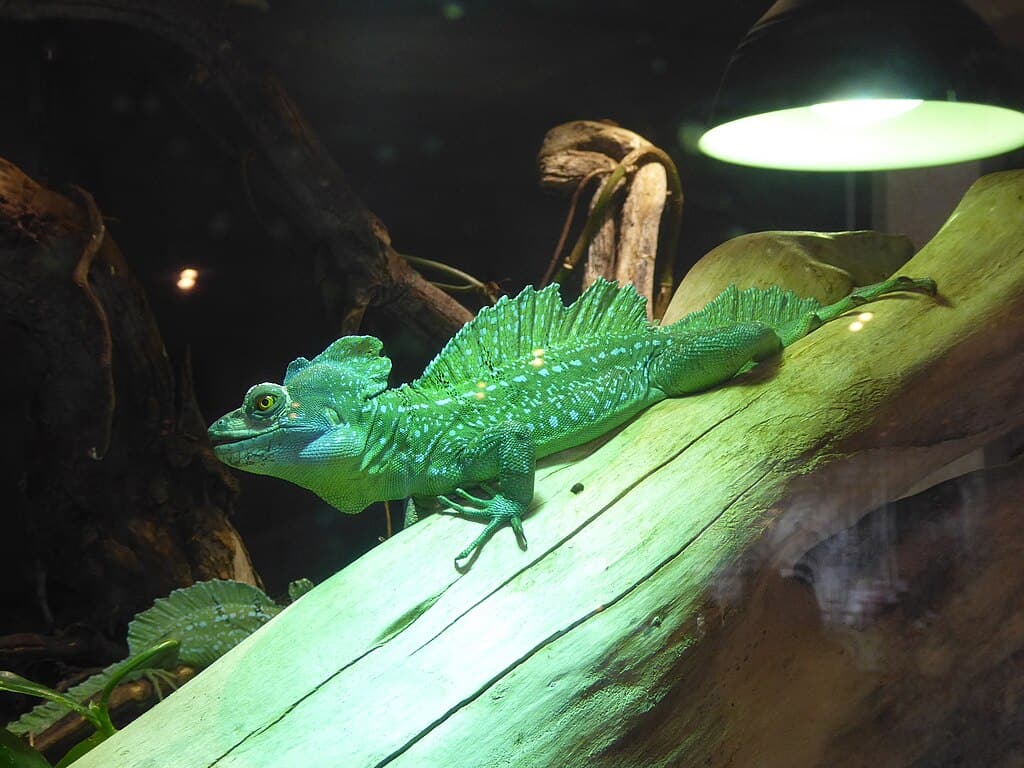
These incredible lizards, also known as Jesus Christ Lizards, are native to Central American rainforests. Green Basilisks are famous not just for their bright green scales, highlighted with blue and orange spots, but also for their ability to ‘walk on water.’ This miraculous feat is made possible by their exceptional speed and hydrophobic feet.
4. Fiji Banded Iguana

The Fiji Banded Iguana is a superbly gorgeous lizard found primarily in the islands of Fiji. Males are usually bright green with bold blue or light green stripes, while females tend to have a less vivid appearance. These iguanas are a rare sight and are protected due to their limited geographic range and decreasing population caused by habitat destruction.
3. Mwanza Flat-headed Rock Agama

Also known as the ‘Spiderman Lizard’ due to its vibrant red and blue coloration, the Mwanza Flat-headed Rock Agama resembles the iconic superhero. Found in East Africa, these lizards display sexual dimorphism, with males showing off their flashy colors to attract females, while females and non-breeding males are drabber in comparison.
2. Eastern Collared Lizard

Displaying an incredible array of colors, the Eastern Collared Lizard is native to the arid landscapes of the United States and Mexico. Males, in particular, are resplendent with a mix of bright blues, greens, and yellows. Besides their vibrant appearance, these lizards are known for their bipedal running, a rare trait among reptiles that allows them to sprint quickly through their desert habitats.
1. Leopard Gecko

Leopard Geckos, originating from the rocky deserts of Asia, boast an eye-catching array of colors and patterns. These nocturnal reptiles have been popular among pet owners for their easygoing nature and the vast variety of morphs available, featuring combinations of yellows, whites, and black spots. Their unique color patterns are not only attractive but serve as excellent camouflage against predators in their native habitat.
Conclusion:

The world of lizards is as fascinating as it is colorful. From the vivid hues of the Panther Chameleon to the sparkling scales of the Jeweled Lacerta, each of these lizards showcases the incredible diversity present within reptilian species. Whether their colors serve for communication, camouflage, or courtship, these lizards demonstrate nature’s artistic flair. As we continue to explore their vibrant world, these lizards remind us of the importance of preserving the natural habitats that allow such beauty to thrive.
- 11 Dog Breeds That Rarely Bark - August 22, 2025
- 13 Wild Animals That Only Come Out at Night - August 22, 2025
- 15 Strangest Animal Feeding Habits - August 22, 2025

